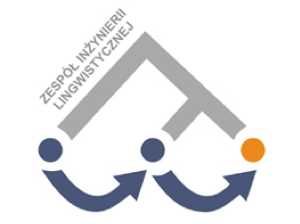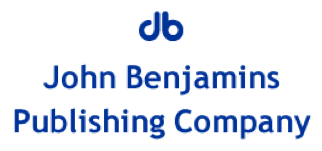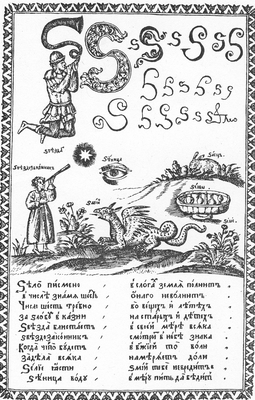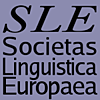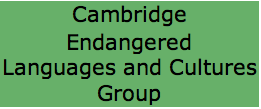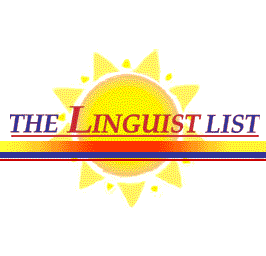Collaborations
Lexical-Functional Grammar: ILFGA, SE-LFG
Lexical-Functional Grammar (LFG) is a formal linguistic framework initiated in the 1970s which has become one of the major theoretical approaches to grammar. It has proven instrumental in the development of computational linguistic models and Natural Language Processing tools. I am currently the Chair of the Executive Committee of the International Lexical-Functional Grammar Association (ILFGA), elected for the 2016-2017 term. I have been a member of ILFGA since 2005 and have participated in and presented papers at nearly all annual meetings since then. In 2009 I was the Conference Chair and host of the LFG09 Conference held at Trinity College, Cambridge. I was elected Chair of Programme Committee for annual meetings 2013 and 2014. Since its conception in February 2010 I have been a contributing member of the South of England LFG Meetings group (SE-LFG) convened by Mary Dalrymple of the University of Oxford. The group meets three times a year for a day of presentations and discussion of various topics from a Lexical-Functional Grammar perspective, bringing together research students, researchers, and academic staff working on and interested in LFG.
Polish Academy of Sciences (PAN) and ParGram Consortium
In 2012-2013 I was a member of Research Staff on an eight-month part-time contract in the Linguistic Engineering Group at the Institute of Computer Science (IPI) of the Polish Academy of Sciences (PAN), contributing to the final stages of the revision and testing of the pilot version of a broad-coverage computational grammar of Polish based on Lexical-Functional Grammar (LFG) constructed by Agnieszka Patejuk in a team led by Adam Przepiórkowski. The grammar was applied to three sets of sentences (two test suites and a selection of sentences from the National Corpus of Polish), resulting in three sets of non-disambiguated parses represented as constituent structure (c-structure) trees and functional structure (f-structure) attribute-value matrices. Using the LFG Parsebanker tool developed by colleagues at the University of Bergen, which identifies f- and c-structure discriminants, I disambiguated the three treebanks manually to obtain one correct parse per any parsed sentence. This resulted in the first quality controlled bank of Polish sentences created with the LFG grammar. Additionally, the manually selected discriminants have been used by my colleagues in ongoing work to train the LFG-based parser to resolve ambiguities automatically. The Polish grammar is being built as part of the ParGram project, a collaborative effort involving researchers in industrial and academic institutions around the world, whose aim is to produce parallel wide coverage grammars for a variety of languages within the linguistic framework of LFG. I joined ParGram in 2012 and have since continued to gear my formal work in LFG towards computational implementation.
John Benjamins book collaboration: Passives in Lithuanian
In 2013-2016 I have been involved in a collaboration with Nijolė Maskaliūnienė and Artūras Ratkus of Vilnius University, funded by the Lithuanian Research Council, to produce a translation from Russian and Lithuanian into English of the works on Lithuanian passive constructions by a renowned linguist Emma Geniušienė. Although the categories of voice and mood in Lithuanian show distinctions not found in other European languages and are of immense interest to linguists, the vast majority of research on Lithuanian is not easily accessible to the Western readership. With Prof. Geniušienė's consent, I have edited and updated her analyses of morphologically passive constructions in Lithuanian, and the volume is now in press (2016) with the publisher John Benjamins in the 'Studies in Language Companion Series' (volume 179).
Academia Salensis: Valency and Argument Realisation in Baltic
In 2012-2015 Academia Salensis, a research and cultural association founded in 2004 by Axel Holvoet of the University of Warsaw and Vilnius University, ran a linguistic research project funded by the Lithuanian Research Council on 'Valency, Argument Realisation and Grammatical Relations in Baltic', to which I was invited as a participant. I gave courses of lectures on 'Modelling Argument Alternations' and 'Argument Structure and Mapping Theory' for the Academia's Summer Schools 2014 and 2015 attended by around 70 international postgraduate and junior academic linguists, a lecture at the Workshop on Voice and Grammatical Relations in Baltic at Vilnius University in January 2015, and acted as a reviewer of publications resulting from the project.
American Association of Teachers of Slavic and East European Languages (AATSEEL)
The substantial annotated bibliography of the -no/-to constructions in Ukrainian, Polish and neighbouring languages by Billings and Maling (1995) is a classic reference indispensable to anyone studying valency phenomena in Slavonic. My doctoral work on passive and passive-like constructions in Polish corrected the widespread misanalysis and misclassification of the Polish -no/-to construction as passive, and has influenced the ongoing work by Joan Maling of Brandeis University/NSF on the emerging impersonal construction in Icelandic. On the invitation of James Lavine of Bucknell University, Vice President of AATSEEL, Billings, Kibort and Maling presented a joint paper at AATSEEL 2013 in honour of Leonard Babby's seminal work on argument structure. Discussions with Joan Maling have led to further research questions in this area which we are now addressing in joint work.
Polish Diachronic Syntax
My work on the syntax of passive and impersonal constructions underlies the analysis of impersonals in 'PolDi', a Polish Diachronic Corpus developed by Roland Meyer at the Institute of Slavistics, University of Regensburg, now at Humboldt University in Berlin, on whose invitation I was a member of the Programme Committee for the 2010 conference on 'Grammatical Change and the Expression of Subjects'. We are considering a possible collaboration to parse the Polish Diachronic Corpus. One method under consideration is the historical corpora annotation scheme developed by Anthony Kroch at the University of Pennsylvania, whom we have consulted and visited in 2012.
Societas Linguistica Europaea (SLE)
I have been a member of Societas Linguistica Europaea since 2008, and have participated in and presented papers at several annual meetings. At SLE 2012 I co-chaired a specialist workshop on 'Contrastive studies of verbal valency in European languages', together with Johanna Barðdal (Bergen), Michela Cennamo (Naples), Lars Hellan (NTNU Trondheim), and Andrej Malchukov (Mainz/Russian Academy of Sciences/MPI for Evolutionary Anthropology, Leipzig).
Cambridge Group for Endangered Languages and Cultures (CELC)
Since January 2010 I have been a co-founding member of the Cambridge Endangered Languages and Cultures Group (CELC). The group brings together linguists and anthropologists pursuing an interdisciplinary approach to the theory, methodology and practice of endangered language and culture documentation.
E-MELD
In 2005-2008 I was Advisor to E-MELD (Electronic Metastructure for Endangered Languages Data), a team moderated by the Linguist List, who work on best practice in the preservation of endangered languages data and documentation, and develop the infrastructure for effective collaboration between electronic archives. I presented at two E-MELD workshops (2005 and 2007) and participated in collaborative exchange visits between the E-MELD team and the Surrey Morphology Group, funded by the US NSF (within the NSF-ESRC programme 'Special Activity in the Area of e-Science').
GOLD
In 2006-2008 I was a contributor to GOLD (General Ontology for Linguistic Description), created as part of the E-MELD Project (NSF #0094934) by Scott Farrar, Terence D. Langendoen and Will Lewis, and further developed under consultation with the Surrey Morphology Group (NSF #0633770). GOLD has recently been integrated into ISOCat (under ISO Technical Committee 37), a superset of all linguistic terminology, and is directly linked in ELAN, a professional linguistic tool for making complex annotations on video and audio resources. I contributed to the current GOLD ontology entries for morphosyntactic features and provided top-level concept definitions in the areas of tense and aspect (this work was funded by the NSF Polar Programs Grant Supplement to the DATA project - 'Dena'ina Archiving, Training, and Access' - awarded to the Linguist List).
Canonical Typology
Both of my extended research projects, on Grammatical Features and on Syntactic Government, involved a consideration of the so-called canonical approach to linguistic phenomena, a method of linguistic analysis pioneered in the Surrey Morphology Group - see the SMG's Canonical Typology bibliography. In January 2009 I was a co-convener, together with Dunstan Brown and Marina Chumakina of the SMG, of a two-day international seminar 'Creating Infrastructure for Canonical Typology', which addressed the issues relevant for the theory and practice of the Canonical Typology approach - see the SMG's Canonical Typology website. Click here to see pictures from the seminar.
South-East Morphology Seminar Series
Between 2004-2009 I was the organiser of the South-East Seminar Series convened by Greville Corbett at the Surrey Morphology Group, University of Surrey. The series consisted of one-day Morphology Meetings, where experts were invited to give tutorials on a descriptive or theoretical topic related to an ongoing project within the SMG, and additional presentations were elicited from researchers in the South-East of the UK. I have organised Meetings involving the following speakers (in the order of their seminars): Gerald Gazdar (Sussex), James Blevins (Cambridge), Östen Dahl (Stockholm), Miriam Butt (Konstanz), Adam Przepiórkowski (Polish Academy of Sciences, Warsaw), Alice Harris (SUNY Stony Brook), Helen Aristar Dry (Michigan), Leora Bar-El (SOAS), Greg Stump (Kentucky), Pier Marco Bertinetto (Pisa), Peter Sells (SOAS), and Olivier Bonami (Paris-Sorbonne & Paris 7).
ISO
I made a substantial contribution to the official UK comments on drafts of ISO 24613 (Lexical Markup Framework) regarding morphosyntactic annotation, created under ISO Technical Committee 37, Sub-Committee 4.



